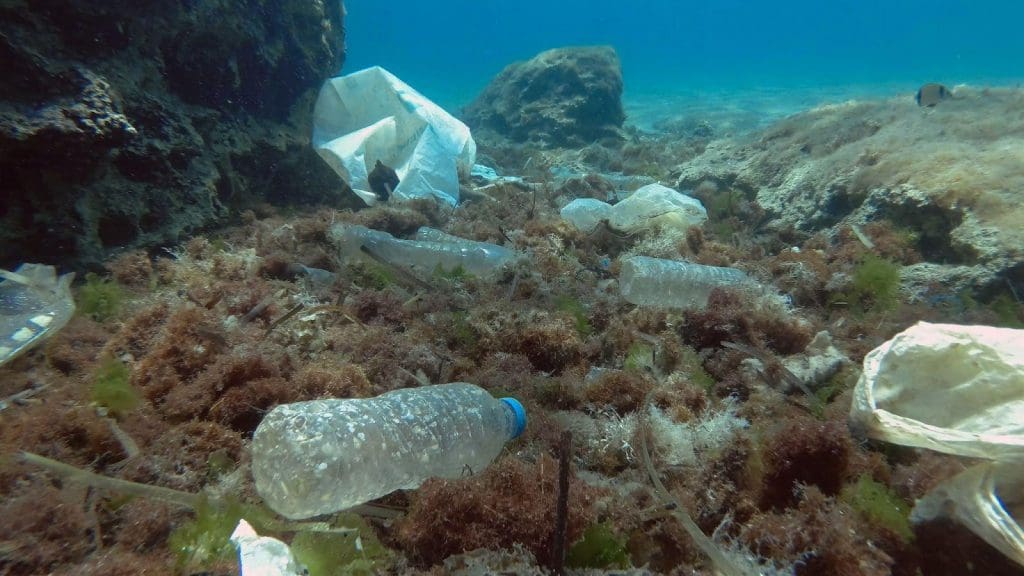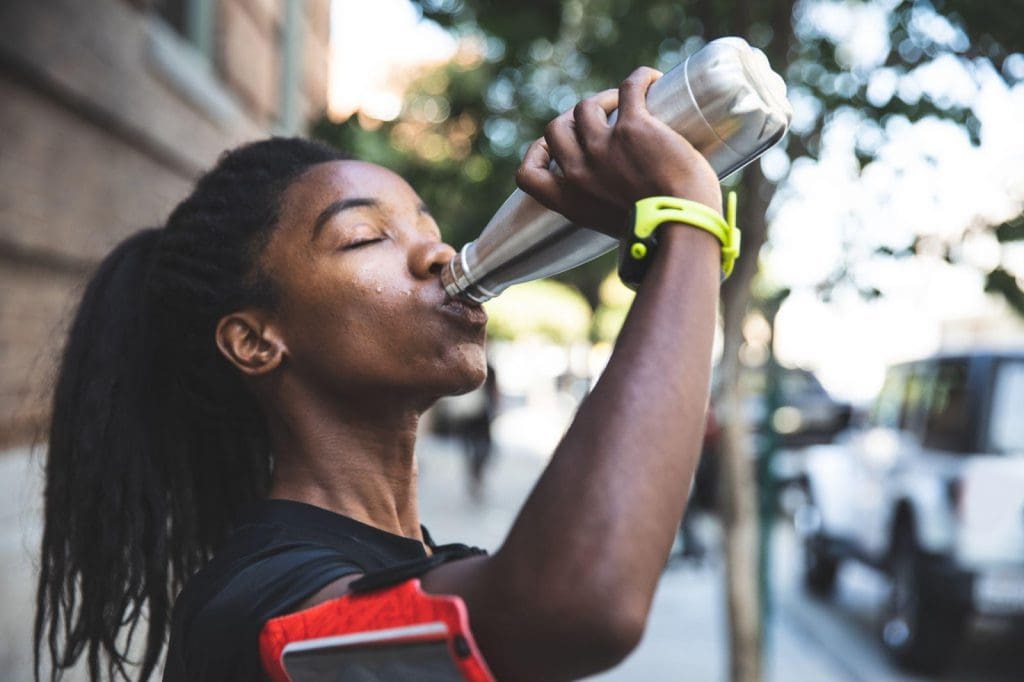
While single-use plastic bottles have been rightfully shunned by consumers and reusable drink bottles have taken their place as the vessel du jour, it’s important to remember we still don’t know everything about plastics and the effects they can have on health. Plastic water bottles (both disposable and reusable) in particular are now under scrutiny care of the Journal of Hazardous Materials. Read on to find out what might really be lurking in your drink bottle before you take your next sip.
Though there are many different types of plastics, they are all made from one base material–petrochemicals. These are manipulated into long, repeating chains called polymers, which can then be heated and pressed into the various shaped containers and products we know all too well. Manufacturers will also use other additives for hardening or stabilising purposes. The most commonly used plastic for drinking containers is polyethylene. This material can be altered by varying the length and alignment of the polymer chains, which determines qualities like hardness, heat resistance, and density.

Most single-use plastic is made from low density polyethylene, or LDPE. Products made from LDPE are often soft and flexible, transparent, and very light to carry. An LDPE bottle is strong enough to hold your drink for a day, but after extended use it can deteriorate and break. Reusable drink bottles, on the other hand, are often made from high density polyethylene, or HDPE. This material is much sturdier than LDPE, as well as more resistant to heat, which makes it a desirable choice for reusable water and sports drink bottles.
10 years ago, BPA– or bisphenol A, a chemical compound which mimics the properties of oestrogen when consumed–became a buzzword amongst the plastic drinking bottle industry. In addition to petrochemicals, BPA was often used as a building block in plastic production and could leach out of the bottle into your drink after use. BPA-free plastic then became a prominent selling point for manufacturers, even though other variations of bisphenol (BPS or BPF) could be used, with similar endocrine-disrupting effects.
However, in recent weeks researchers at the University of Copenhagen have found that there are more chemical substances in bottled water than was ever previously thought. Two Danish chemists have found that, after only 24 hours, water left in a reusable bottle was found to contain more than 400 different substances–including substances never seen before in plastics. This was tested on bottles both old and new, as well as biodegradable plastics in addition to standard polyethylene. The study was also able to determine that dishwashers exacerbate the chemical leaching, from the combination of heat and detergents, which increases the measured substances to over 3500.
The identity of many of these chemical substances is yet to be determined, and of the chemicals that are known, the toxicity is not well studied. Known chemicals found include diethyltoluamide (DEET)–an active ingredient found in insect repellent–as well as photoinitiators, which are suspected carcinogens. The results show how little we really know about what chemicals are leached from plastic over even a short period of time. The researchers are calling for further studies on these substances and more accountability from manufacturers to minimise harmful additives and degradation products.
Metal containers are one of the most readily available alternatives to plastic. They are extremely sturdy, don’t degrade from heat exposure, are 100% recyclable, and can be light to carry if single-walled. Migration of metal particles into the water is negligible–no more than household cookware–though some people report a slight metallic taste. Some manufacturers line their metal bottles with plastic or resin to mitigate this taste so be sure to steer clear of those if you want to avoid any potential chemical leaching.

Glass is a very popular choice by health professionals. Detergents are less likely to stick to glass and it is naturally inert, meaning hidden reactions won't go on in inside your bottle if it's left full of water. Their biggest drawback is that they are more easily broken than steel or HDPE. Shatter-resistant glass exists, but it’s harder to come by and is often more expensive than other options.
Bioplastics, such as polylactic acid (PLA), have been in production for several years now as an alternative for single-use plastic. They are made from renewable biological materials and are often compostable. Unfortunately, many bioplastics are not sturdy enough to withstand ongoing use, and even if they were, the possibility of compounds migrating into leftover water is not well studied.
Unsure about the best containers for your chemicals? We are here to help. At Chemwatch we have a range of experts spanning all chemical management fields, from chemical storage to Risk Assessment to heat mapping, eLearning and more. Contact us today to find out more at sa***@*******ch.net.
Sources: